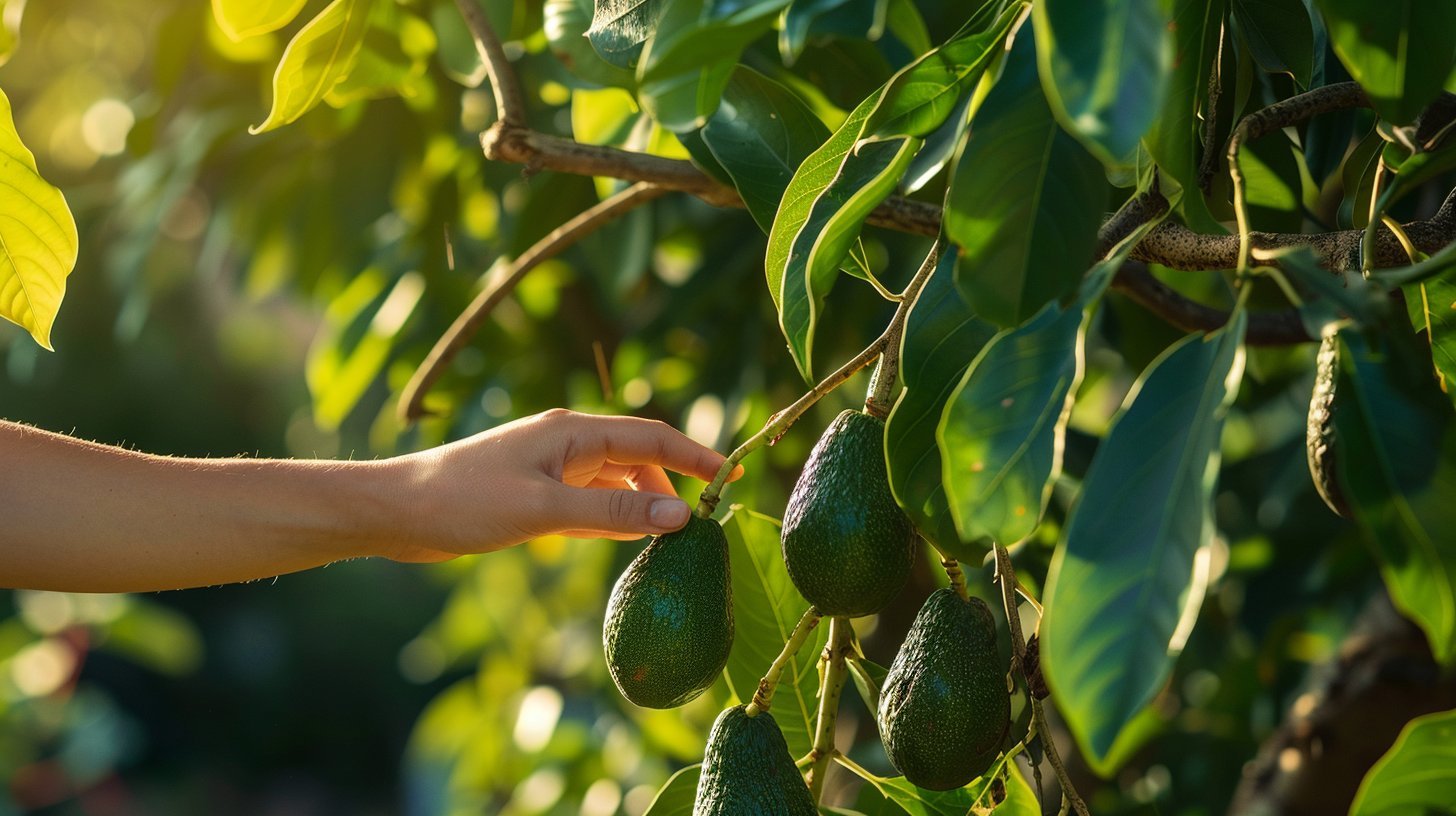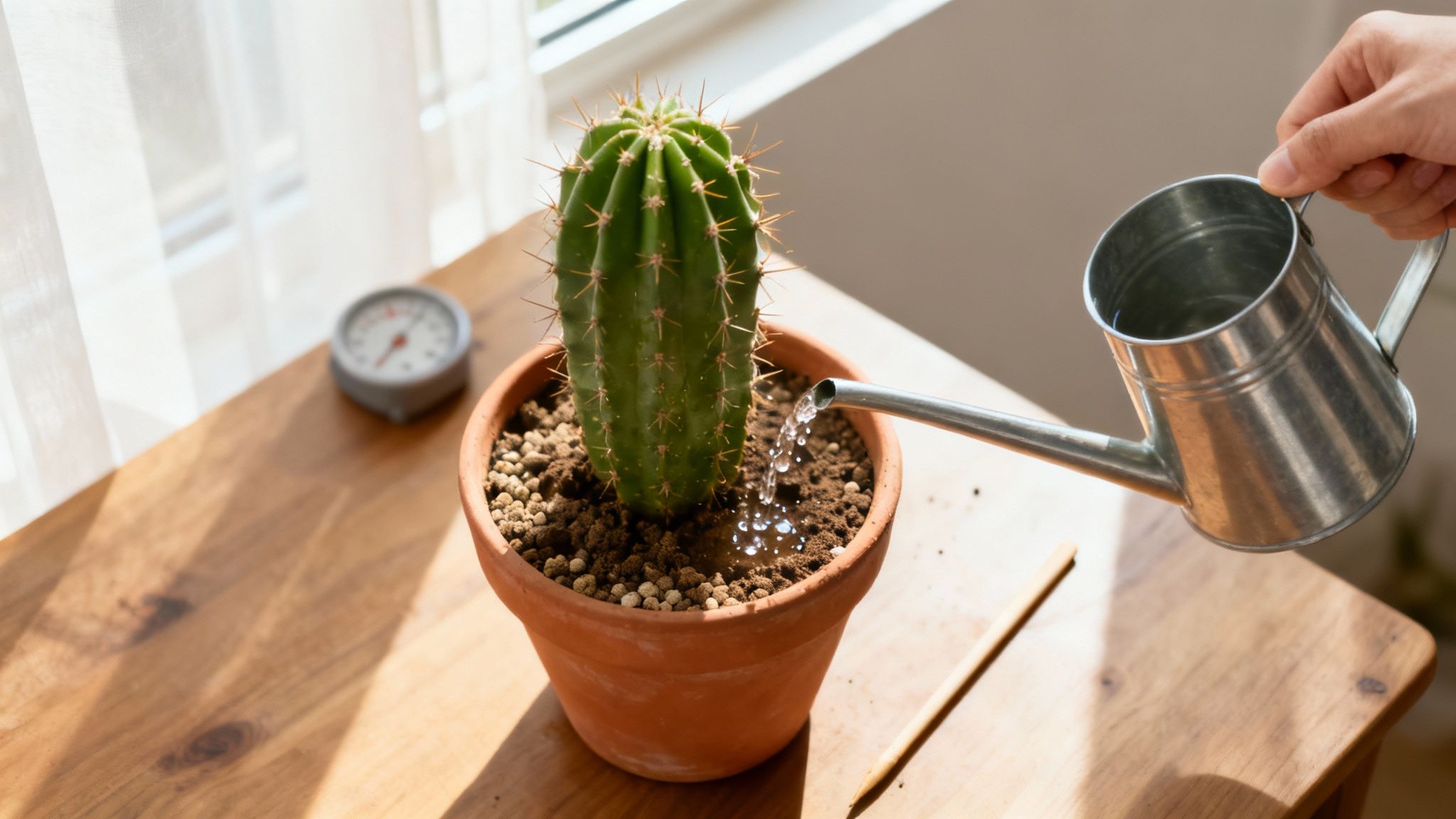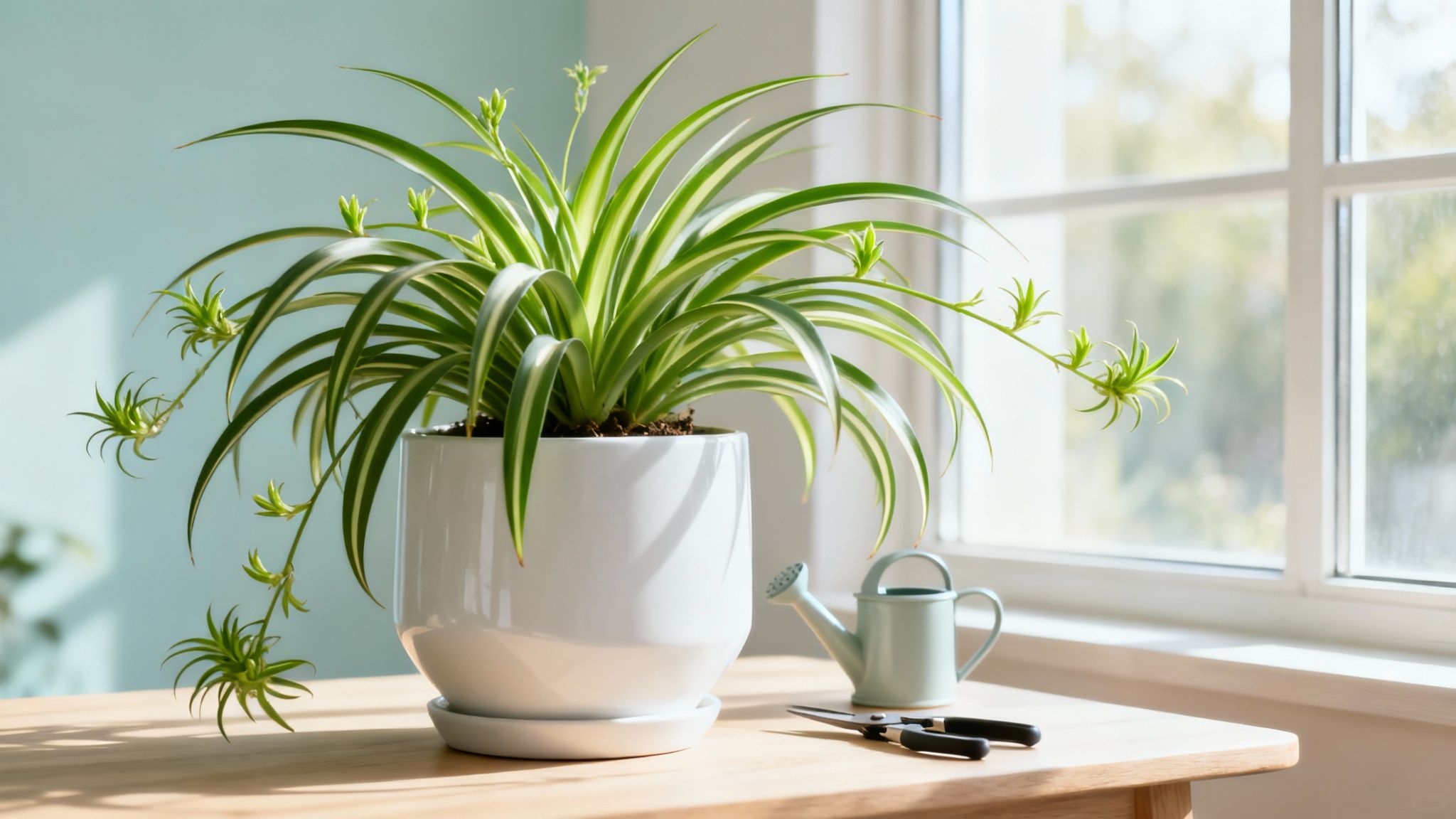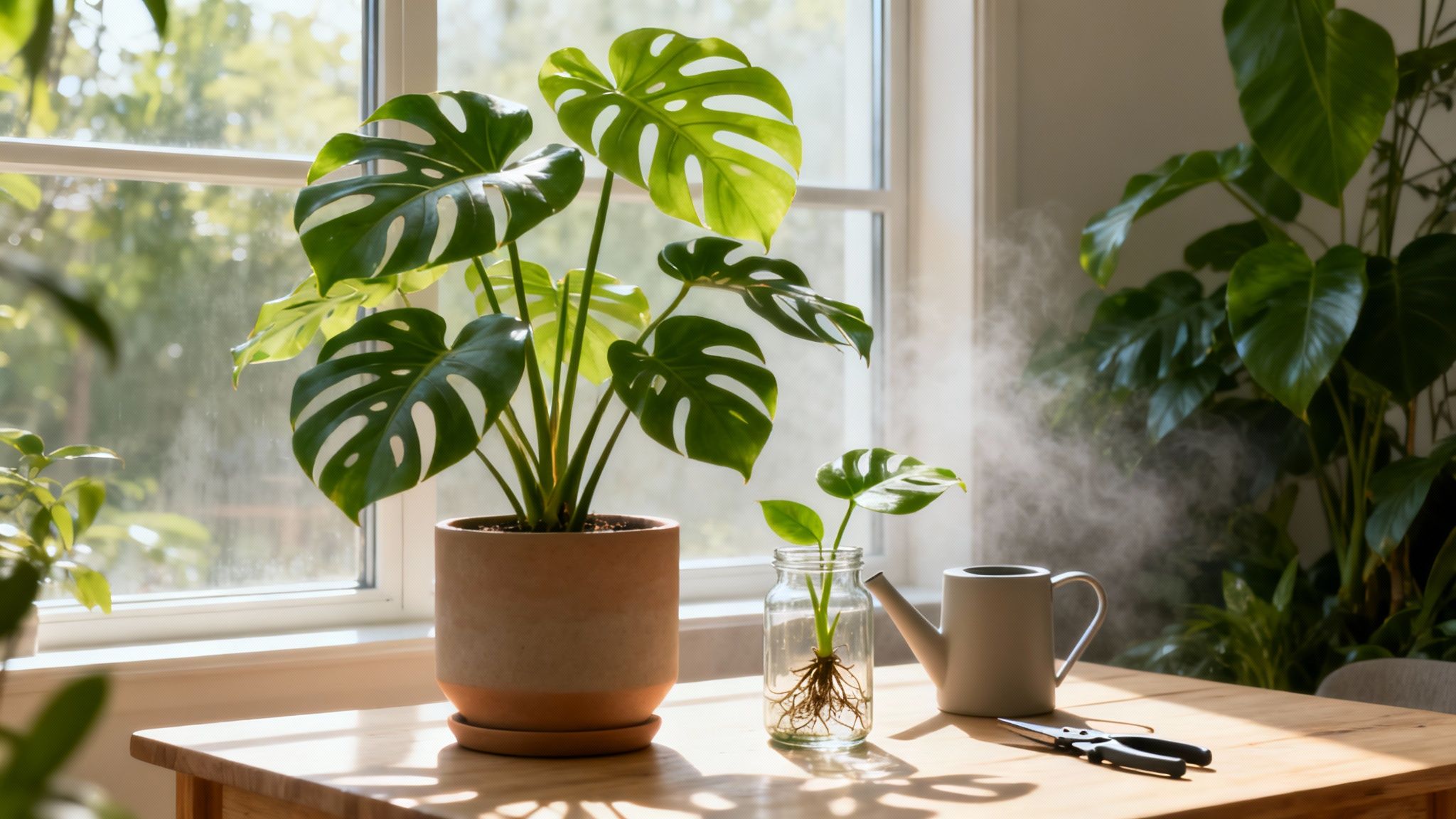Picture this: stepping into your backyard and picking a fresh, creamy avocado, no matter the season. This isn't just a gardener's fantasy—it’s completely achievable with smart planning. Most guides just tell you to dig a hole and hope for the best. This comprehensive avocado tree planting guide is your roadmap to creating a continuous harvest, turning your garden into a year-round source of guacamole's star ingredient.
Your Path to a Year-Round Avocado Harvest
We'll dive into the nitty-gritty of 'Type A' and 'Type B' trees, a concept that sounds complex but is the secret to unlocking a steady supply of fruit. I'll show you how to choose the perfect varieties that will not only survive but thrive in your specific climate. Whether you have a sprawling yard or a sunny patio, you'll find practical, actionable steps to give your trees the absolute best start.
Struggling to pick the right tree? The Tendra app’s extensive avocado cultivar database makes it simple. Even better, you can connect with local gardeners in your area—your "Twin Plant Mates"—who have already cracked the code to a year-round supply and are happy to share their secrets.
The Secret to Abundant Fruit: Understanding Avocado Pollination
The key to a tree overflowing with avocados isn't just sun and water—it's a fascinating biological dance. Avocado trees, Persea americana, have a unique flowering habit known as synchronous dichogamy. Getting a handle on this is the foundation of any successful avocado tree planting guide.
Here's a surprising fact: every avocado flower opens twice over two days, changing its gender each time. On day one, it opens as a female, ready to receive pollen. The next day, it reopens as a male, ready to shed its pollen. All avocado varieties are categorized into two groups based on the timing of this gender reveal.
The Two Sides of Pollination: Type A and Type B
This is where the magic of cross-pollination comes in. The two flowering types are practically designed to complement each other, which is why having one of each can dramatically boost your fruit production. Your local bees and other pollinators are the essential couriers, carrying pollen between these complementary trees.
Type A Cultivars: Think of the world-famous 'Hass'. These trees open their flowers in the morning as female. They close in the afternoon and then reopen the following afternoon as male to release pollen.
Type B Cultivars: Varieties like 'Fuerte' and 'Bacon' do the exact opposite. Their flowers open in the afternoon as female on the first day, then reopen the following morning as male.
By planting a Type A and a Type B tree near each other, you create a perfect overlap for pollination. When the Type A tree's flowers are receptive females in the morning, the Type B tree's are pollen-shedding males. The roles reverse in the afternoon, ensuring a constant opportunity for bees to do their work.
To make this crystal clear, let's look at how their daily schedules line up.
Type A vs. Type B Avocado Flowering Schedules
Flower Type | Morning (Day 1) | Afternoon (Day 1) | Morning (Day 2) | Afternoon (Day 2) |
|---|---|---|---|---|
Type A | Female | Closed | Closed | Male |
Type B | Closed | Female | Male | Closed |
As you can see, the timing is perfectly staggered. The male phase of one type overlaps with the female phase of the other, creating the ideal setup for a bumper crop.
Maximizing Your Harvest with Smart Pairings
While a single avocado tree can occasionally self-pollinate if weather conditions are just right, the yields are often spotty and unreliable. For a truly impressive harvest, planting both a Type A and a Type B variety within 50 feet (about 15 meters) of each other is the gold standard.
Let’s put this into practice. Imagine your 'Hass' (Type A) tree on a sunny morning. Its flowers are open and receptive. Nearby, your 'Fuerte' (Type B) is in its male phase, buzzing with pollen. A visiting bee easily makes the transfer, ensuring your 'Hass' sets fruit. The next afternoon, the roles flip, and the 'Hass' returns the favor by helping pollinate the 'Fuerte'.
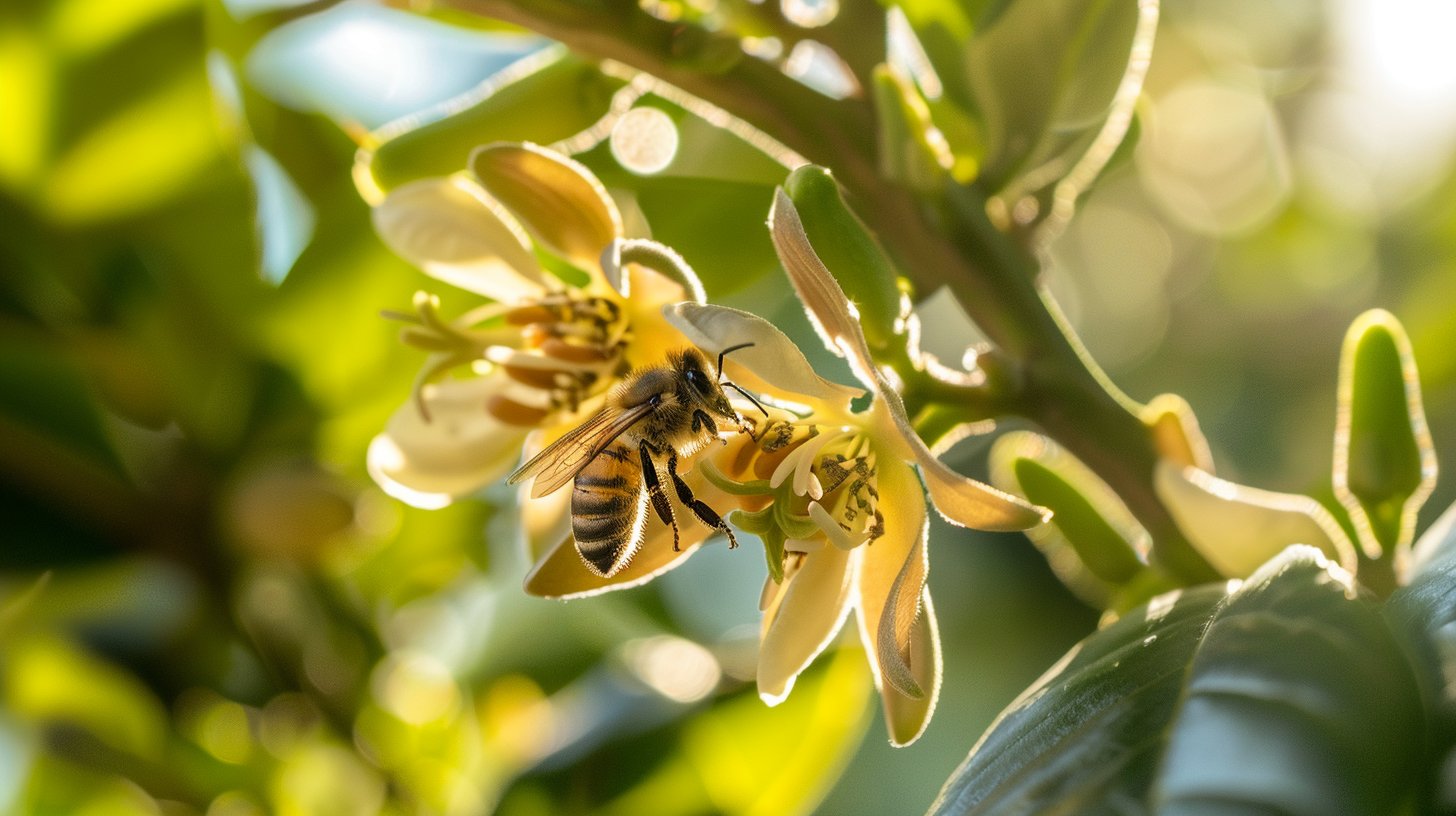
Problem: I Only Have Space for One Tree!
If you're tight on space, don't give up! Some gardeners get lucky with a single tree, but fruit production can be hit-or-miss. Here’s a practical tip: Temperature plays a surprisingly large role; cooler weather can sometimes cause the male and female flowering schedules to overlap slightly on the same tree, allowing for some self-pollination. However, for a consistently abundant harvest, the Type A and B strategy is unmatched. For city gardeners, this is a perfect chance to team up with neighbors. If you plant a Type A, and a neighbor a block away has a Type B, local pollinators can easily bridge that gap for both of you.
Choosing the Perfect Avocado Cultivars for Your Garden
With hundreds of avocado varieties available, stepping into a nursery can feel overwhelming. The secret to success isn't just picking a healthy-looking plant; it's choosing the right tree for your unique climate and avocado aspirations. Your decision should boil down to three things: your climate, when you want to harvest fruit, and of course, flavor. For most of us, the dream is a staggered harvest—giving you a steady supply of fresh, homegrown avocados for as much of the year as possible.
Matching Cultivars to Your Climate
The first filter you must apply is your climate, specifically your USDA Hardiness Zone. An avocado tree that thrives in Southern California might not survive a single winter in North Florida. This is where understanding the three main avocado "races"—Mexican, Guatemalan, and West Indian—becomes incredibly practical.
Mexican Varieties (Persea americana var. drymifolia): These are the champions of cold tolerance. Hailing from the highlands of Mexico, cultivars like 'Mexicola' and 'Bacon' can often handle brief temperature dips to 20°F (-6°C). They typically have thin, edible skin and a rich, nutty flavor. If you're gardening in zones 8b or 9, these should be at the top of your list.
Guatemalan Varieties (P. americana var. guatemalensis): This group includes the world-famous 'Hass'. They are less cold-hardy, generally tapping out around 26°F (-3°C). Their fruit is what you likely know and love: thick, pebbly skin and high oil content for a creamy texture.
West Indian Varieties (P. americana var. americana): These are true tropicals, best suited for the humid, warm climates of South Florida (Zone 10b and up). They are the most sensitive to cold but produce huge fruits with smooth, green skin and lower oil content.
Strategizing for a Year-Round Harvest
Once you've zeroed in on the varieties that can survive your winters, the real fun begins: planning for a continuous supply. The last thing you want is all your avocados ripening in the same month! This is where pairing Type A and Type B trees becomes a powerful strategy, not just for better pollination, but for stretching out your harvest window. A well-chosen duo can easily keep you in avocados for eight to ten months.
Pro Tip: If you have the space, planting an early-season, a mid-season, and a late-season variety of both Type A and Type B trees is the ultimate play for a truly year-round supply.
It's no secret that the demand for avocados is soaring. Did you know? The global avocado market is projected to hit US$30.2 billion by 2032. This boom is all about consumer interest in nutrient-rich foods, making your homegrown supply more valuable than ever. You can discover more insights about the avocado market's growth and what it means for consumers.
Using Tendra to Find Your Perfect Match
Juggling all these variables—climate zone, flower type, harvest season, and flavor profile—can be a lot. This is precisely where having Tendra’s extensive cultivar database in your pocket becomes a game-changer. Forget generic advice; you can get detailed information tailored to your specific needs. On our dedicated avocado database, you can find the ideal cultivar for fruit, oil content, cold hardiness, or climate adaptation. It’s a data-driven approach that takes the guesswork out of the equation.
Strategic Avocado Pairings for a Continuous Harvest
To get you started, here’s a look at some popular and effective pairings. This table helps visualize how you can mix and match different varieties to create that coveted staggered harvest.
Variety (Type) | Partner Variety (Type) | Primary Harvest Season | Cold Hardiness (USDA Zone) | Key Characteristics |
|---|---|---|---|---|
Hass (A) | Fuerte (B) | Spring - Fall | 9b - 11 | The classic creamy, rich flavor. High-yield but needs a pollinator for best results. |
Gwen (A) | Zutano (B) | Spring - Summer | 9a - 11 | Similar to Hass but with a greener skin. A semi-dwarf tree, great for smaller yards. |
Reed (A) | Sir Prize (B) | Summer - Fall | 9b - 11 | Produces very large, round fruit with a buttery texture and excellent flavor. |
Mexicola (A) | Bacon (B) | Late Summer - Fall | 8b - 10 | Extremely cold-hardy. Produces small, black-skinned fruit with a nutty, rich taste. |
Pinkerton (A) | Sharwil (B) | Winter - Spring | 9b - 11 | Produces long, pear-shaped fruit with a small seed and deliciously creamy flesh. |
By thinking through these pairings, you move from just planting a tree to curating a personal avocado orchard, no matter how small your space.
Mastering the Avocado Planting Process
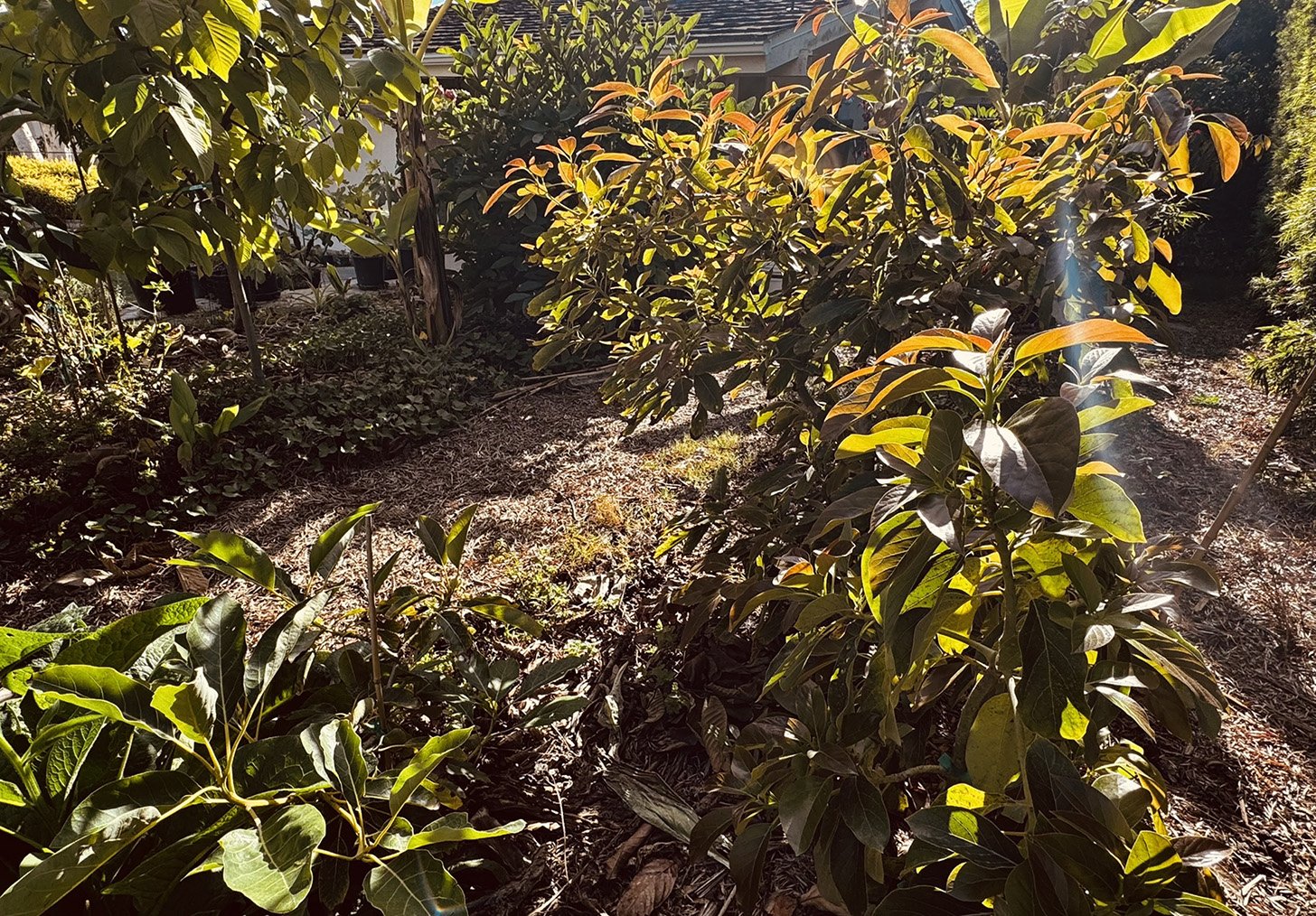
Alright, this is where the fun really starts—getting your hands dirty. Planting your avocado tree correctly is probably the single most important thing you'll do. You're building the foundation for a tree that will, with any luck, feed you and your family for decades. Let's dig into the details that matter.
Location, Location, Location
Before your shovel touches the soil, scout the perfect spot. Avocado trees are sun-worshippers; they need at least six to eight hours of direct sunlight daily to produce fruit. An east-facing spot is often ideal, as it gets gentle morning sun while being protected from the harshest afternoon rays.
Just as critical is drainage. Avocados have a deep-seated hatred for "wet feet." Their shallow root systems are incredibly vulnerable to root rot in soggy soil.
Practical Tip: Here's a quick way to test your drainage:
Dig a hole about 1 foot (30 cm) deep and fill it with water.
Let it drain completely.
Fill it a second time and time how long it takes to drain.
If the water is gone within a few hours, you're golden. If there's still a puddle after 8-10 hours, you have a drainage problem that needs a workaround.
Problem-Solution Scenario: You found the sunniest spot, but it failed the drainage test. Don't give up! Instead of planting in the ground, build a mound or a raised bed. Aim for at least 2 feet (60 cm) high and 5 feet (1.5 m) wide, using a good mix of your native soil and high-quality compost. By planting on this mound, you lift the root ball clear of the soggy mess below.
Prepping The Planting Hole
Once you've zeroed in on the location, it's time to prep. A rule of thumb seasoned growers live by: dig the hole twice as wide as the root ball, but no deeper. This is critical. If you dig too deep, the tree will slowly sink over time, burying the root flare (where the trunk meets the roots) and inviting deadly root rot. The extra width, however, gives the young roots plenty of soft soil to spread out into. This isn't just backyard advice; it's a global principle recognized in the global strategies shaping the avocado industry.
The Art Of Planting High
Now for the most important part. Gently slide the tree out of its nursery pot. If the roots are coiled up in a tight circle (a condition called "root-bound"), use your fingers to gently tease them apart. This encourages them to grow outwards.
Set the tree in the middle of the hole, and check its height. You want the top of the root ball to be sitting 1-2 inches (2.5-5 cm) above the surrounding ground level. We call this "planting high," and for avocados, it’s a non-negotiable step to prevent root rot. Backfill the hole with a 50/50 blend of your native soil and quality organic compost. Gently tamp the soil down to eliminate large air pockets.
First-Year Watering And Support
Right after planting, use leftover soil to build a small circular berm around the outer edge of where you dug. This little moat ensures water goes directly to the root zone. Give the tree a long, slow, deep drink to saturate the entire root ball.
For the next few weeks, check the soil moisture every couple of days by poking your finger in. The goal is simple: keep the soil consistently moist, but never soggy. Practical Tip: If you live in a windy area, stake the young tree for its first year. Use two or three stakes placed just outside the root ball and tie the trunk loosely with something soft and flexible. Remember to remove the stakes after a year so the tree develops a strong trunk on its own.
Essential First-Year Care for Your New Tree
You’ve planted your avocado tree—fantastic! Now the real work begins. The first year is make-or-break, setting the stage for a strong, productive tree. This stage is all about establishing a robust root system and a solid structure.
Perfecting the Watering Routine
If there’s one thing new avocado growers get wrong, it’s watering. Your goal is consistent moisture, not waterlogged mud. For the first few weeks, check the soil every couple of days by poking your finger 2-3 inches (5-7.5 cm) deep. If it feels dry, it’s time for a good, slow soak.
Watering Tip: It’s all about deep, infrequent watering. This encourages roots to grow downward, building a more drought-tolerant tree. A light sprinkle every day is one of the worst things you can do.
As your tree gets established, you can stretch the time between waterings. A good rule of thumb is about 10 gallons (38 liters) of water once or twice a week during the warm growing season.
A Gentle Approach to Fertilizing
Young avocado trees are light feeders. Their delicate new roots can be easily burned by too much fertilizer, so wait at least a month after planting before feeding. When you do start, use a balanced fertilizer formulated for citrus and avocado trees.
Small, Frequent Doses: Apply about one tablespoon every four to six weeks during the growing season (spring through fall).
Spread It Out: Sprinkle the fertilizer evenly across the soil, starting a few inches from the trunk and extending just past the drip line.
Water It In: Always water thoroughly right after fertilizing to wash nutrients to the root zone and prevent burn.
Keeping track of these schedules can be tough. The Smart Care Reminders in the Tendra app can automate the process, sending you a notification so you never miss a crucial feeding or watering day.
Shaping for Future Strength
Pruning during the first year is minimal. Your goal is building a strong framework. Once the tree is established and growing, encourage a single, strong central leader (main trunk) by snipping off competing vertical branches. Practical Tip: Tip-prune the very top of that leader once the tree hits about 3-4 feet (1-1.2 meters) tall to encourage it to branch out.
Protecting Your Young Tree
A young avocado tree is vulnerable. Its thin, green bark can get sunburned, and an unexpected frost can be a disaster.
Sun Protection: Mix a 50/50 batch of white interior latex paint and water and paint the trunk. It works just like sunscreen.
Frost Protection: If frost is in the forecast, cover your tree with a frost cloth or old blanket, draping it to the ground to trap radiant heat.
Pest Management: Keep the area around your tree clean and free of weeds. For more specific problems, our plant care guides offer sustainable solutions.
While a grafted tree typically takes 3 to 4 years to produce its first real harvest, the effort you put in now is what makes that future bounty possible.
A San Diego Gardener's Avocado Dream
Let’s talk about a real-world example. Meet Naomi, a home gardener in sunny San Diego (USDA Zone 10b). Like many of us, she dreamed of a year-round supply of avocados but only had room for two trees. It’s a classic dilemma, but Naomi got clever.
She did her homework, digging through Tendra’s extensive cultivar database to find the perfect pair for her climate and space. She landed on the classic 'Hass' (a Type A variety) which fruits from spring through fall, and paired it with a 'Fuerte' (a Type B) that covers winter and spring. This wasn't a lucky guess; it was a strategy to get an overlapping harvest for nearly ten months of the year.
How Diligence Paid Off
Following an avocado tree planting guide—much like this one—she planted them in a sunny spot with well-amended soil, spacing them about 20 feet (6 meters) apart. For the first few years, Naomi was incredibly diligent. She focused on deep, infrequent watering and used care reminders in Tendra to stay on schedule with a balanced fertilizer. That consistency made all the difference. By year four, both of her trees were rewarding her with a steady supply of fruit. Naomi's success is a perfect illustration of how picking the right trees and giving them the right start can lead to an incredible, delicious payoff right in your own backyard.
Ready to Grow Your Own Guacamole?
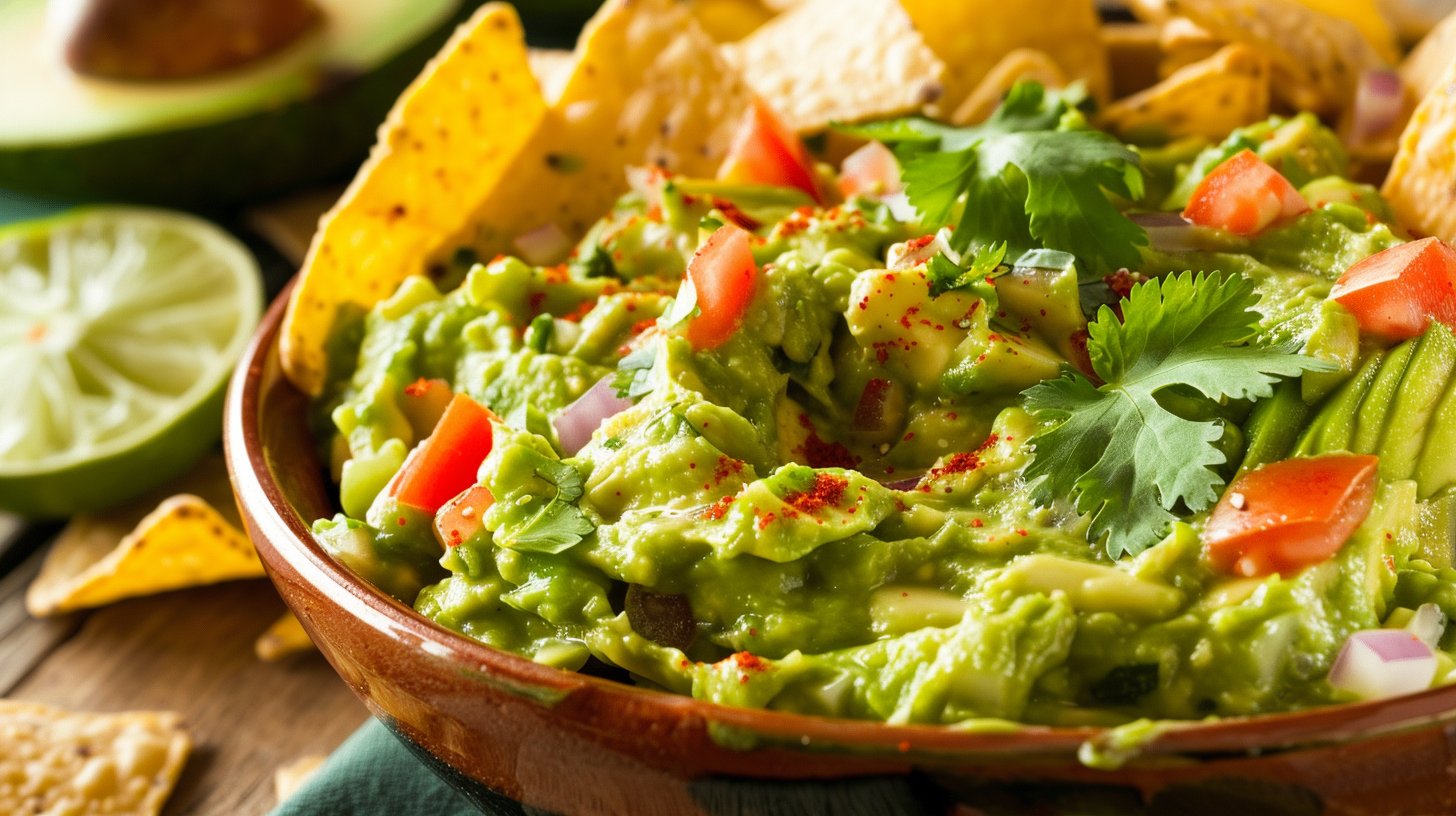
And there you have it. You're now equipped with the knowledge to turn that dream of homegrown, creamy avocados into a delicious reality. We've walked through the all-important dance of Type A and B pollination, figured out how to choose the perfect varieties, and covered the nuts and bolts of getting your tree in the ground for a successful start.
Remember, the secret sauce is simple: pair the right trees for your climate and give them a solid start with good care. Growing your own food is a journey, one that connects us back to nature, our meals, and even our community. Gardening shouldn't be a solo mission.
Find your plant's local growing partners with Tendra—where local gardeners connect and thrive.
Connect. Grow. Share.
Common Questions About Planting Avocado Trees
Even with the best guide, a few questions always pop up. Let's tackle some of the most common ones for first-time avocado growers.
How Much Space Do I Need Between Avocado Trees?
Providing your trees with adequate space is important for their long-term health. For standard-sized varieties, plant them about 20 to 30 feet (6 to 9 meters) apart. This might seem like a large gap when the trees are young, but it allows them to avoid competition for sunlight, water, and nutrients as they grow. If you have a smaller backyard, semi-dwarf varieties are more suitable, as they can be planted much closer, typically around 10 to 15 feet (3 to 4.5 meters) apart. You can also use Tendra to gather information about the size of different tree varieties.
Proper spacing is your first line of defense against many common issues. Good airflow helps leaves dry quickly after rain, significantly reducing the risk of fungal diseases. You can learn more by exploring our resources on common plant diseases.
Can I Grow an Avocado Tree in a Pot?
You absolutely can! Container growing is a fantastic solution if you're short on space or live in a colder climate where you need to bring the tree indoors for winter. The key is to pick a true dwarf variety like 'Wurtz'—often nicknamed 'Little Cado'.
Go Big on the Pot: Start with a container that's at least 24 inches (60 cm) in diameter.
Drainage is Non-Negotiable: Ensure your pot has multiple large drainage holes.
Stay on Top of Watering: Pots dry out much faster than garden soil, so you'll need to check the moisture levels more often.
When Is the Best Time of Year to Plant?
Timing is everything. The sweet spot for planting a new avocado tree is in the spring, just after the last threat of frost has passed. This is a crucial seasonal tip. Planting in spring gives your tree the entire warm growing season to establish a robust root system before the chill of winter arrives, reducing transplant shock and giving it the strongest possible start.
Ready to turn your phone into a plant expert? With Tendra, you can explore hundreds of avocado varieties, set smart care reminders, and connect with local gardeners who have already mastered growing avocados in your area.
